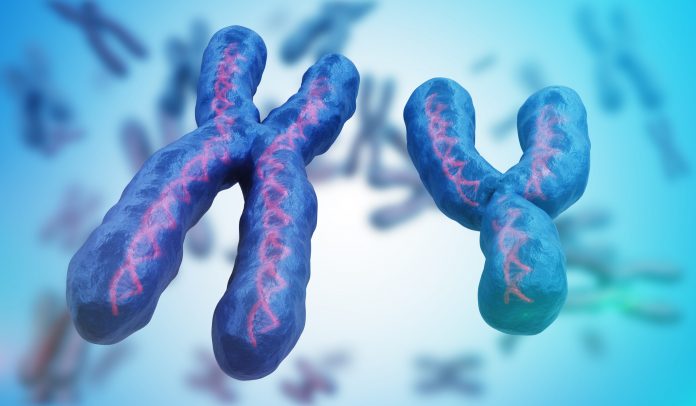
Risk of autism appears to be linked to the Y chromosome, a Geisinger study found, which may explain the greater prevalence of Autism spectrum disorder (ASD) in males. The researchers found no change in a ASD risk for participants with an additional X chromosome, but those with an additional Y chromosome were twice as likely to have an ASD diagnosis.
The results were published this week in Nature Communications. The lead author is Alexander S. F. Berry, staff scientist at Geisinger.
“A leading theory in the field is that protective factors of the X chromosome lower autism risk in females,” said Matthew Oetjens, Phd, a co-leader of the study and assistant professor at Geisinger’s Autism & Developmental Medicine Institute.
This team, sought to determine the effects of the X and Y chromosomes on autism risk by examining ASD diagnoses in people with an abnormal diagnoses of X or Y chromosomes number, a genetic condition known as sex chromosome aneuploidy.
ASD is a neurodevelopmental condition characterized by impaired social interaction and communication, and restricted and repetitive patterns of behavior, interests and activities. It’s estimated that around 75 million people have autism spectrum disorder—1% of the world’s population.
ASD is nearly four times more prevalent among males than females, but the reason for this disparity is not well understood. The authors write, “For decades, a “female protective effect” has been endorsed as the predominant explanation for this sex ratio difference, postulating that the risk distribution in biological females is shifted further from the ASD liability threshold than in males.
One common hypothesis involves the difference in sex chromosomes between males and females—typical females have two X chromosomes, while typical males have one X and one Y chromosome.
This team analyzed genetic and ASD diagnosis data on 177,416 patients enrolled in the Simons Foundation Powering Autism Research (SPARK) study and Geisinger’s MyCode Community Health Initiative.
They write: From these data, we modeled three relationships between sex chromosome dosage and ASD risk: the extra Y effect, the extra X effect, and sex chromosome haploinsufficiency. We found that the extra Y effect increased ASD risk significantly more than the extra X effect.”
Individuals with an additional X chromosome had no change in ASD risk, but those with an additional Y chromosome were twice as likely to have an ASD diagnosis. This suggests a risk factor associated with the Y chromosome instead of a protective factor associated with the X chromosome.
“While these may seem like two sides of the same coin, our results encourage us to look for autism risk factors on the Y chromosome instead of limiting our search to protective factors on the X chromosome,” Berry said. “However, further research is needed to identify the specific risk factor associated with the Y chromosome.”
This analysis also confirms prior work by showing that the loss of an X or Y chromosome, known as Turner syndrome, is associated with a large increase in ASD risk.





